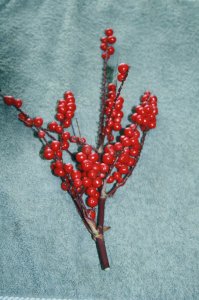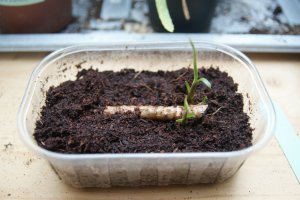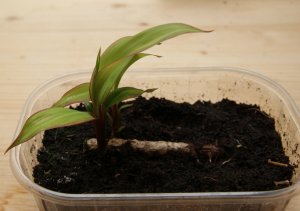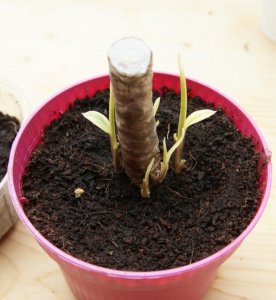You are using an out of date browser. It may not display this or other websites correctly.
You should upgrade or use an alternative browser.
You should upgrade or use an alternative browser.
How to Propagate Cordylines (Ti plants)
- Thread starter putu enjula
- Start date
- 9,565
- 28/09/07
- 121
- 223
Scott,
By the look of your results I'm guessing you will be using this technique for now on.
By the look of your results I'm guessing you will be using this technique for now on.

Last edited:
tropicalken
Active Member
- 198
- 03/04/08
- 14
- 38
Congratulations Scott, on your great success.
ScotTi
Esteemed Member
- 4,828
- 16/04/08
- 312
- 163
Dean, For me the results are looking really good and I think the seaweed soak will become normal. I have started to also feed the in ground plants and potted seedlings with liquid seaweed and noticing some good results with it. More on that as time moves on.Scott,
By the look of your results I'm guessing you will be using this technique for now on.
ScotTi
Esteemed Member
- 4,828
- 16/04/08
- 312
- 163
Ninja
Well-Known Member
- 107
- 24/02/14
- 39
- 48
ScotTi
Esteemed Member
- 4,828
- 16/04/08
- 312
- 163
Looking really good, keep us posted on its progress.here's my fastest log! it started getting bumps all over, so I used the horizontal method in the endView attachment 26389
Donnamaria Long
New Member
- 1
- 14/05/14
- 0
- 1
I would love some seeds please. XIf anyone is up for the task of growing Cordylines from seed, I have some seed from Kiwi (pic) ready now. I will make 3 envelopes of aprox 20 seed. FREE for those interested.
ScotTi
Esteemed Member
- 4,828
- 16/04/08
- 312
- 163
I should have a few seed (no seed from Kiwi this year) ready soon that I will be happy to send you. PM me your address and I will mail them when ready.I would love some seeds please. X
tropicalken
Active Member
- 198
- 03/04/08
- 14
- 38
These berries look very healthy. I hope there is a lot of seed per berry.Thanks Ken. I harvested fresh seed of Toucan today. View attachment 26366
tropicalken
Active Member
- 198
- 03/04/08
- 14
- 38
Your Xerox seedlings show a lot of promise. They are definitely keepers.Here is a seedling from the self sown Xerox that I found in the middle of the group. I need to pot this one up I think. View attachment 26367
ScotTi
Esteemed Member
- 4,828
- 16/04/08
- 312
- 163
Ken, My mistake as they are Hawaiian Boy seedlings. I will be working this weekend to thin out the tightly packed plants in the group. As I look beneath the taller plants I see more smaller plants that show promise but need there space.Your Xerox seedlings show a lot of promise. They are definitely keepers.
ScotTi
Esteemed Member
- 4,828
- 16/04/08
- 312
- 163
Started to remove the seed from the berries today. The berries on the most part have contained 6-9 seed found a couple with 12.These berries look very healthy. I hope there is a lot of seed per berry.
tropicalken
Active Member
- 198
- 03/04/08
- 14
- 38
That sounds like a good number of seeds. Is that the average number you've seen from other berries in previous years?Started to remove the seed from the berries today. The berries on the most part have contained 6-9 seed found a couple with 12.
ScotTi
Esteemed Member
- 4,828
- 16/04/08
- 312
- 163
Ken, On a average from others in the past I would say the berries contain 2-6 seed. I removed seed yesterday from 2 McInery's Spear berries and one contained 2 seed the other 5.That sounds like a good number of seeds. Is that the average number you've seen from other berries in previous years?
- 9,565
- 28/09/07
- 121
- 223
Scott - have you too found seed that was already sprouting inside of the fruit???
ScotTi
Esteemed Member
- 4,828
- 16/04/08
- 312
- 163
Dean, I have seen it a few times in our wet season. I have a few plants from the Sensation Ti Plant that started that way.Scott - have you too found seed that was already sprouting inside of the fruit???
tropicalken
Active Member
- 198
- 03/04/08
- 14
- 38
Dean, did you ever have any of your ti plants in California set berries?
ScotTi
Esteemed Member
- 4,828
- 16/04/08
- 312
- 163
Update= The first signs of sprouts were noticed this past weekend. Checked on the two different seed experiments daily. As of today water soaked seeds show 8 little plantlets in the pot/ seaweed water soaked seed nothing.View attachment 25627 Experiment #2 - Fresh Ti seed soaked for 48 hours in seaweed water VS the fresh Ti seed soaked in water. Seed now in soil and the seaweed soaked seed will stay on the liquid seaweed diet. Water soaked seed will stay with water. Lets see what happens here.
tropicalken
Active Member
- 198
- 03/04/08
- 14
- 38
I'm wondering if the seaweed water has more effect than plain water if the seeds are old? Fresh seeds probably don't need anything to stimulate them into germination. Just moisture will do.Update= The first signs of sprouts were noticed this past weekend. Checked on the two different seed experiments daily. As of today water soaked seeds show 8 little plantlets in the pot/ seaweed water soaked seed nothing.
- 9,565
- 28/09/07
- 121
- 223
I did not have a lot in SoCal. But I did have a couple of dozen through the years - not all of them surviving. But no, I do not ever recall seeing berries on any of them.Dean, did you ever have any of your ti plants in California set berries?
ScotTi
Esteemed Member
- 4,828
- 16/04/08
- 312
- 163
I will always use the seaweed moss baggie in the future. I have started about 2 dozen logs this way and have had 100% success. A few of them I have tried in the past a few times without success. This one I was worried about but it made it and now potted up.

tropicalken
Active Member
- 198
- 03/04/08
- 14
- 38
Would brushing pollen between flowering plants, misting the flower stalks, and bagging them to increase humidity, increase chances of berry formation in our dry climate? Maybe I'll give it a try.I did not have a lot in SoCal. But I did have a couple of dozen through the years - not all of them surviving. But no, I do not ever recall seeing berries on any of them.
tropicalken
Active Member
- 198
- 03/04/08
- 14
- 38
The newly rooted cane looks quite healthy.I will always use the seaweed moss baggie in the future. I have started about 2 dozen logs this way and have had 100% success. A few of them I have tried in the past a few times without success. This one I was worried about but it made it and now potted up. View attachment 26617
- 9,565
- 28/09/07
- 121
- 223
I'm not sure if it's the dry or the temp. It seems to me that Scott gets way more berries than I do - and we are both nice and humid, but he is much warmer.Would brushing pollen between flowering plants, misting the flower stalks, and bagging them to increase humidity, increase chances of berry formation in our dry climate? Maybe I'll give it a try.
ScotTi
Esteemed Member
- 4,828
- 16/04/08
- 312
- 163
Do you guys see lots of flowering on your Ti plants? I have yet to understand what throws them into flowering. In the past I have had them start as early as late July and as late as early November. No two years have been the same. For a interesting read visit this University of Florida site ( edis.ifas.ufl.edu/ep447 ). It talks about using gibberellic acid to induce flowering in the Ti as well as other tropical plants.
Ninja
Well-Known Member
- 107
- 24/02/14
- 39
- 48
- 9,565
- 28/09/07
- 121
- 223
Well there is always Bloom Food. I don't use it, and perhaps that is why I don't get as many flowers as Scott. In fact, now that I think about it, I hardly ever fertilize the Tis with anything. And if they do get anything, it is usually in passing with a handful of my Palm Special in passing - and that is not a bloom/flowering enhancer. I know Jeff Marcus uses Bloom Food on his palms (to produce seed), and they definitely flower sooner and more profusely than "normally" feed palms.Do you guys see lots of flowering on your Ti plants? I have yet to understand what throws them into flowering. In the past I have had them start as early as late July and as late as early November. No two years have been the same. For a interesting read visit this University of Florida site ( edis.ifas.ufl.edu/ep447 ). It talks about using gibberellic acid to induce flowering in the Ti as well as other tropical plants.
tropicalken
Active Member
- 198
- 03/04/08
- 14
- 38
Here the ti plants only seem to flower in Feb./Mar. which is during our cool season. I've never had any set seed . Perhaps using gibberellic acid to get them to flower during warmer periods might make them set seed. On a brighter note, one of our club members says he has berries on his Haleakala. He posted the following picture.Do you guys see lots of flowering on your Ti plants? I have yet to understand what throws them into flowering. In the past I have had them start as early as late July and as late as early November. No two years have been the same. For a interesting read visit this University of Florida site ( edis.ifas.ufl.edu/ep447 ). It talks about using gibberellic acid to induce flowering in the Ti as well as other tropical plants.

- 9,565
- 28/09/07
- 121
- 223
Ken - just curious - do you know anyone who has managed to keep the common green Ti alive in SoCal?
tropicalken
Active Member
- 198
- 03/04/08
- 14
- 38
There is neighbor a mile or so away that has a lot of green ti growing in front of their house. It's been there many years. I also have quite a few of the common green ti. They are all doing OK. I did have a cane die to the soil line last year, but a new one came up and is getting some size on it. Did your green ti die all at once, or was it one cane at a time? There seems to be something here that causes cane death. It can happen at any time of the year, but is more prominent in the cooler months. Often times new canes will spring up from the roots, while other times the whole plant will end up completely dead. If you know anything about this and how to treat it, let me know.
- 9,565
- 28/09/07
- 121
- 223
I never tried any because a very good grower just down the street from me said he couldn't get them to grow for him. And I never saw any for sale either. So that is the extent of my experience with them there. We were very close to the coast, where it is much cooler, so maybe that is a factor.There is neighbor a mile or so away that has a lot of green ti growing in front of their house. It's been there many years. I also have quite a few of the common green ti. They are all doing OK. I did have a cane die to the soil line last year, but a new one came up and is getting some size on it. Did your green ti die all at once, or was it one cane at a time? There seems to be something here that causes cane death. It can happen at any time of the year, but is more prominent in the cooler months. Often times new canes will spring up from the roots, while other times the whole plant will end up completely dead. If you know anything about this and how to treat it, let me know.
As to the sudden death syndrome, I can' t offer any theories - but a guess would be root fungus from cooler soil, and maybe try a preventative fungicide. In other words, don't wait for the symptoms to appear.
- 9,565
- 28/09/07
- 121
- 223
You probably know - the green ti is big here for wrapping lots of different food in and serving on. Also in ceremonial flower displays on tikis and in heiaus (temples). Also as good luck around the entrances to homes. In other words, they are everywhere, and one of the original "canoe plants."I have not tried to grow or have I ever seen the green Ti here in Fl. I have a couple from seed that are close to all green but they do show color on leaf stems
- 9,565
- 28/09/07
- 121
- 223
Interesting - but is it easy for the novice to tell the right side up on most bare logs?Here is a little tidbit of advice: Do not try to root logs in water upside down, it will not work.
tropicalken
Active Member
- 198
- 03/04/08
- 14
- 38
I think we've all done that before. With some canes it's hard to know the difference . With those I just place them horizontally when rooting.




